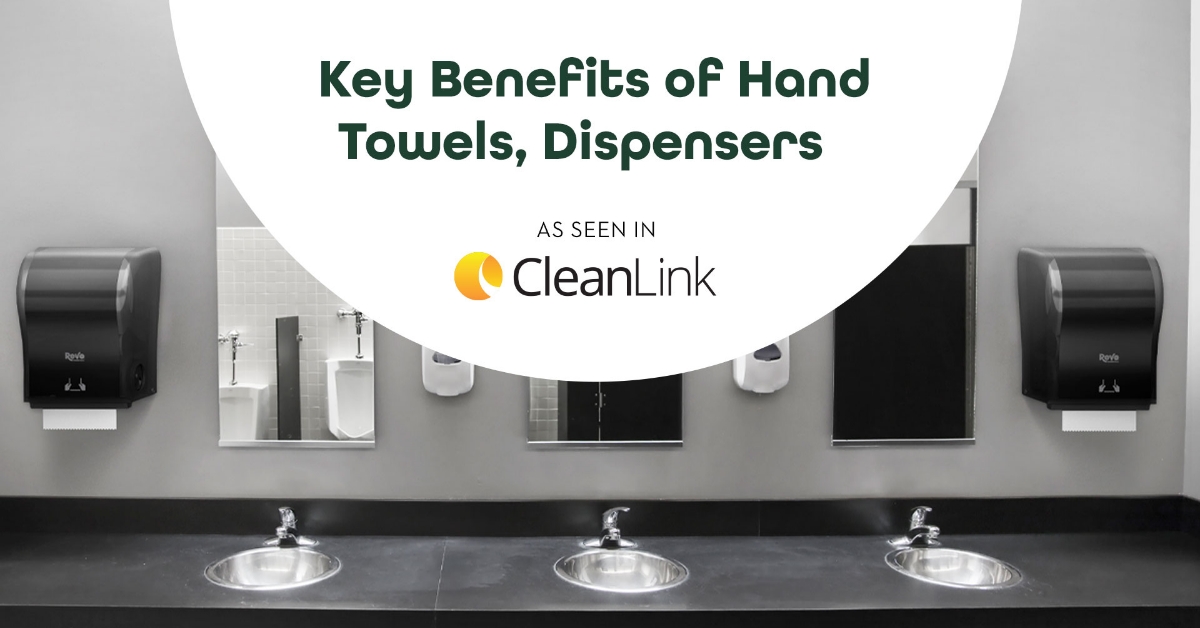
Article: Key Benefits of Hand Towels, Dispensers
In a recent Q&A for CleanLink, Laura Ashley, Marketing Manager for Resolute Tissue, along with other manufacturers, discuss the role hand towels play in infection prevention and how they add to sustainable initiatives. Here are some of the highlights from Ashley.
Q: What are the key benefits to choosing hand towels/dispensers?
Ashley: Roll towel dispensers pair well with high traffic areas such as airports, stadiums, or school restrooms. Hands-free roll towel dispensers are preferred in the food service industry to avoid cross-contamination by only touching the towel used. Meanwhile, folded towels could be seen in smaller restrooms with low traffic.
Q: How can the addition of hand towels fit into a facility’s sustainability plan?
Ashley: By using certified tissue and towel refills, the facility assures restroom patrons that these consumables are sustainably sourced. Dispensers are available on the market that features only refills that are certified to sustainability standards.
Q: Have touch-free towel dispensers gained traction and what are the specific advantages to these options?
Ashley: Yes. Hands-free dispensers have obvious hygienic benefits as only the surface of the paper is touched by the user. We believe this is a strong trend that will continue — in all away-from-home markets, but particularly in healthcare, food service, and educational settings.
Q: What role does hand drying play in a proper hand hygiene program?
Ashley: Thorough and efficient hand drying is an essential part of good hand hygiene. Bacteria transmission is more likely with wet skin rather than dry skin. Hand dryers are known to spread bacteria and take longer to dry hands, while paper towels are more hygienic with the physical movement of drying the hands removing — and not dispersing — the bacteria.
Q: What cost-saving measures can facility managers take when it comes to managing paper towels/dispensers?
Ashley: Certainly, towel dispensers with stub-roll transfer features to ensure that 100 percent of the roll towel is used up — resulting in zero waste and better cost-efficiency. Another way to control cost is to control consumption with a variable paper length setting where custodial staff can set the towel dispenser to a shorter length setting, which tends to discourage overuse. Also, many dispensers have an option that controls whether a paper towel is presented in the exposed mode (also known as “hanging” or “butler” mode) or whether the paper is only dispensed upon electronic sensor activation (hidden mode). The hidden mode may reduce unnecessary consumption. Battery changeovers also are an inherent cost not only in the expense of the batteries, but also in labor costs.
Q: What are some of the most common maintenance-related challenges for paper towels/dispensers, and how can they be avoided or minimized?
Ashley: First, lost keys — choose a dispenser that has a lock system with an option to convert to a pushbutton, which doesn’t require a key to refill. The pushbutton still looks like a lock and discourages pilferage. Second, outages are avoidable — to avoid surprise outages, choose an electronic paper towel dispenser that has a low-paper indicator and low-battery indicator. Third, waste not want not — to avoid waste, choose a paper towel dispenser that has a stub roll transfer feature. This buys extra time before needing to refill and offers relief from the expense, waste, and guilt of throwing away even a small, partial roll. Fourth, where possible, choose high capacity for less maintenance time devoted to changeovers. Fifth, seamless covers — today’s more stringent cleaning regimens require lots of surface cleaning. Look for seamless dispensers that won’t trap dirt in crevices, making wipe downs quick and simple.
Read the full article where it originally appears on CleanLink.